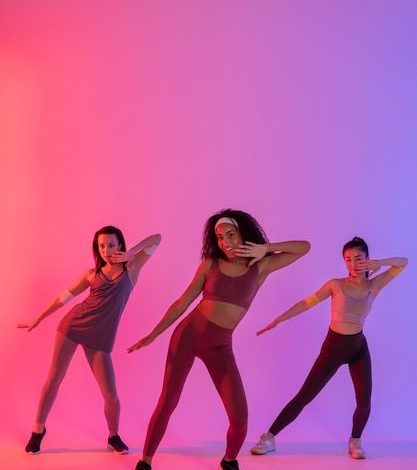Zumba Routines: A Fun and Effective Way to Stay Fit

Zumba has become a popular fitness trend worldwide, combining energetic dance moves with upbeat music to create an enjoyable and effective workout. This article will guide you through a variety of Zumba routines, helping you understand the core rhythms, movements, and techniques involved in this dynamic form of exercise.
4 Core Rhythms
Zumba incorporates four core rhythms that form the foundation of its routines. These rhythms include Merengue, Salsa, Cumbia, and Reggaeton. Each rhythm has its own unique characteristics, steps, and music, offering a diverse and engaging workout experience.
What Is Zumba?
Zumba is a fitness program that was created by Colombian dancer and choreographer Alberto “Beto” Perez in the 1990s. It combines elements of Latin and international music with dance moves to create a fun and high-energy workout. Zumba routines are designed to improve cardiovascular fitness, coordination, and flexibility while burning calories.
Merengue 6 Count
Merengue is a lively and rhythmic dance style originating from the Dominican Republic. In Zumba, the Merengue 6 count is often used as a warm-up routine. It involves simple steps such as marching, side steps, and hip movements, all performed to the infectious beats of Merengue music.

Arms
Incorporating arm movements into your Zumba routines can help engage your upper body muscles and add intensity to your workout. Various arm variations are used in Zumba, such as punches, reaches, and waves. By syncing your arm movements with the rhythm, you can enhance your overall coordination and sculpt your arms.

Adding Intensity
To increase the intensity of your Zumba workout, you can incorporate movements that involve jumping, squatting, or kicking. These dynamic movements elevate your heart rate, boost calorie burn, and challenge your muscles. Remember to start with low-impact variations and gradually progress to higher-impact movements based on your fitness level.


Salsa Arm Variation
Salsa, a popular Latin dance style, adds flair and excitement to Zumba routines. One common variation is the Salsa arm movement, where you perform elegant arm motions while executing steps inspired by the Salsa dance. This combination enhances the overall rhythm and coordination of your Zumba routine.

Lower Body
Engaging the lower body is essential in Zumba routines as it helps strengthen and tone your legs, hips, and glutes. Moves like salsa steps, lunges, and squats target these muscle groups effectively. By focusing on your lower body, you can improve balance, endurance, and overall lower body strength.

Cumbia
Cumbia, a traditional Colombian dance form, brings a lively and joyful vibe to Zumba routines. Its characteristic hip movements, side steps, and shuffling motions make it an exciting part of the workout. Incorporating Cumbia steps into your routine not only enhances your cardiovascular fitness but also adds a touch of cultural richness to your dance workout.


Reggaeton
Reggaeton, a genre of Latin music influenced by hip-hop and Caribbean rhythms, provides a vibrant and energetic backdrop for Zumba routines. Its fast-paced beats and syncopated rhythms inspire dynamic movements, including hip isolations, body rolls, and fast footwork. By incorporating Reggaeton steps into your Zumba routine, you can unleash your inner dancer and have a blast while working out.


Conclusion
Zumba offers a thrilling and effective way to stay fit while enjoying the rhythm and energy of dance. By incorporating the four core rhythms, exploring various movements for the arms and lower body, and adding intensity to your routines, you can create a personalized Zumba workout that suits your fitness goals and preferences. So put on your dancing shoes, get moving, and experience the joy of Zumba!
Save Pin

